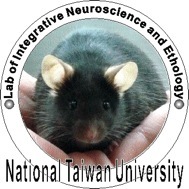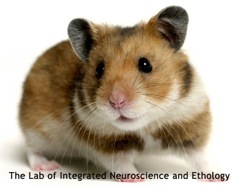The “LINE”, standing for “Laboratory of Integrated Neuroscience and Ethology”, is a multi-disciplinary research laboratory in the Psychology Department, National Taiwan University, Taipei, Taiwan. It emphasizes the integrative understanding of the links between brain and behaviors from multi-disciplinary approaches. In the LINE, we take advantage of animal models to study the neural mechanisms underlying behaviors and psychiatric disorders. Needless to say, animal models that recapitulate the full phenotypic spectrum of any psychiatric disorder, such as anxiety disorder or schizophrenia, are nearly impossible and it’s unlikely to capture the entire clinical human syndromes in an animal model. However, animal models fill many gaps in the studies of psychiatric disorders and provide important clues to further understand and treat these disorders. In this laboratory, I provide two lines of my current studies as examples to briefly demonstrate how feasible it is to use lab animals to study/model complex cognitive function and psychiatric disorders piece by piece. The first example will be the use of male hamsters and their agonistic behavior to study social memory and social anxiety. Using male hamsters as a model system, we developed a behavioral method for the investigation of individual recognition after fighting and this method shows promise for revealing the neural mechanisms underlying recognition of individuals in a realistic and relatively complex social context. We found that hamsters can learn through social learning (i.e. eavesdrop) and defeated hamsters generate fear memory which requires de novo protein synthesis and increase their anxiety-like behavior toward its opponent. The second example will take the advantage of genetically modified mice and transgenic mice as the most straightforward way to study the biological functions of candidate genes in vivo and their roles in the pathogenesis of schizophrenia-like symptoms. Mice bearing targeted mutant fragments of schizophrenia susceptibility genes (e.g. Akt1) are examined and evaluated on behavioral, physiological, anatomical, pharmacological, biochemical, or electrophysiological endpoints. In addition, the environmental risk factors (e.g. amphetamine abuse, stress, and developmental deprivation) encountered after birth may be factors of precipitating the symptoms in a genetic prone population. The gene X gene interactions and gene X environment interactions are further investigated in these mice in the LINE. Our findings reveal a sexually dimorphic effect of Akt1 on behavioral phenotyping and methamphetamine-induced behavioral changes, which may be related to estrogen. Taken together, animal models have a central and indispensable role in the process of discovering the causes of psychiatric disorders and generating mechanism-based treatments. The neurochemical and neurobiological mechanisms are currently under investigation and further experiments are still in progress.











